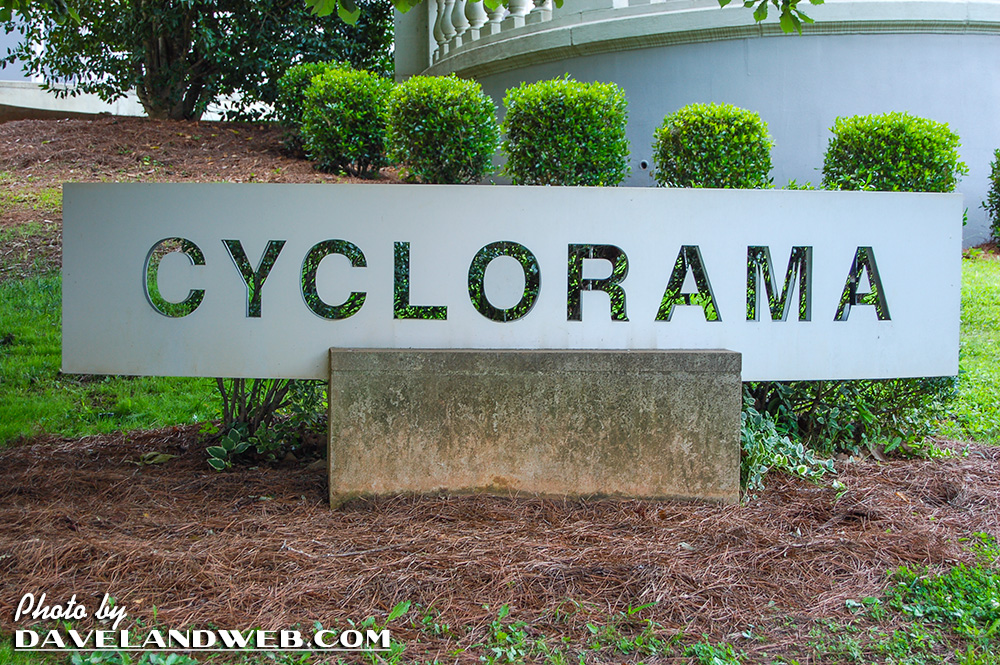
It was quite by accident that I stumbled upon the Civil War Cyclorama exhibit during my 2007 visit to Atlanta (photo above of the original Grant Park location). I had very little time before I had to catch my plane, so my tour of the museum was extremely rushed. Always so much to do with so little time! If you’re not familiar with the Cyclorama, here’s the description from a 1937 brochure:
The painting, measuring fifty feet in height, four hundred feet in circumference and weighing eighteen thousand pounds, was painted in 1885 and 1886 in Milwaukee by three German artists, Lohr, Lorenze and Heine. Eight thousand pounds of paint was used in the production of this painting whose landscape, looking in any direction from the reviewers’ platform, covers a radius of twenty-five or thirty miles. So realistic and so unmistakably true is this landscape that one familiar with Atlanta may point out many individual places. Thousands of blasted tree stumps, bushes and shrubbery, shell-torn in effect; hundreds of life-like plastic figures of Confederate and Federal soldiers; torn rails and cross-ties; shells, cannons and other familiar fragments of war have been placed so effectively in the circular area forming the battlefield surrounding the painting that it is difficult in viewing it to determine the ending of the real and the beginning of the illusion.
I remembered reading that during the premiere of “Gone with the Wind” in 1939, the stars were allowed to walk through the Cyclorama.
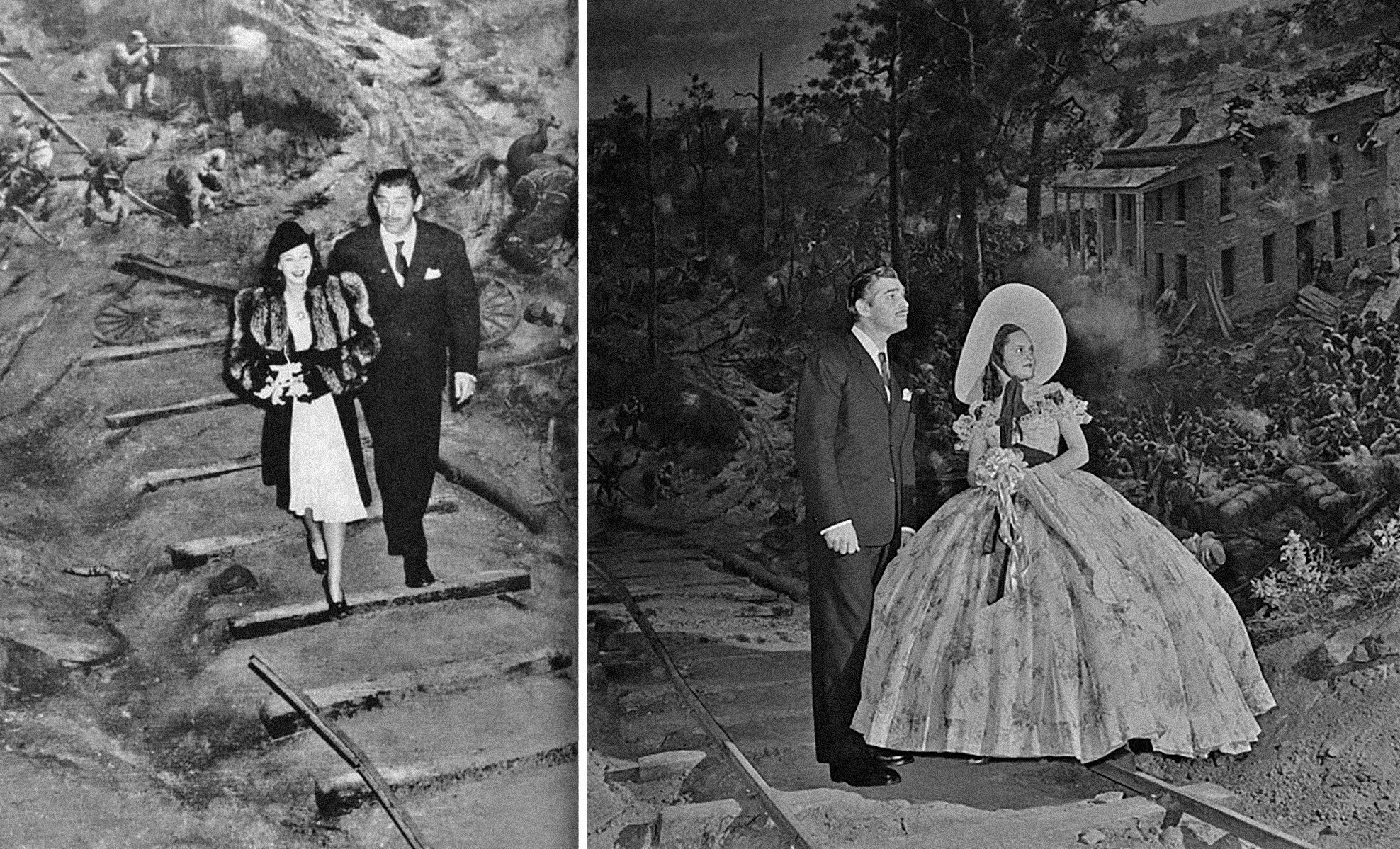
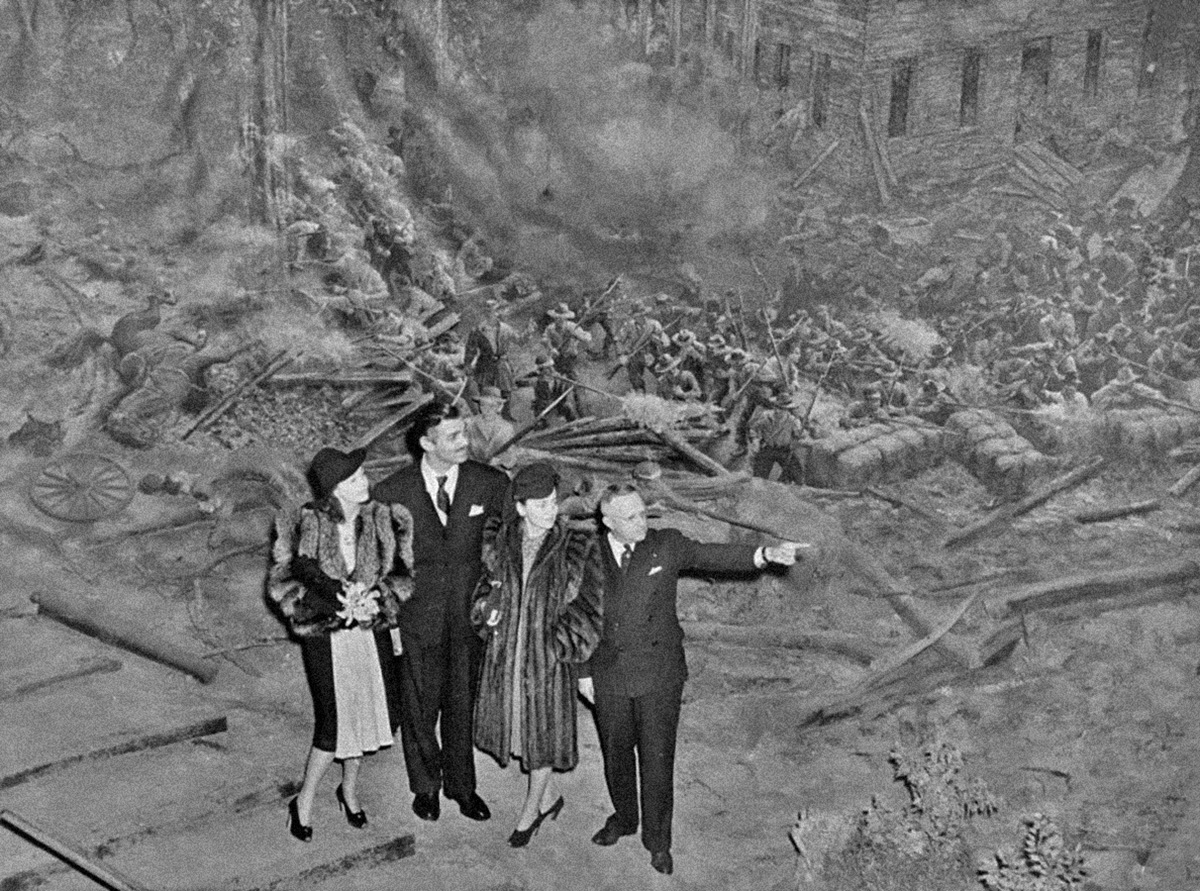
Clark Gable (who played Rhett Butler in the film) was accompanied by Margaret Palmer, a local Atlanta Junior League girl who just happened to fit into Vivien Leigh’s Scarlett O’Hara BBQ costume and was allowed to wear it during the tour. She even made it into LIFE magazine as a result!
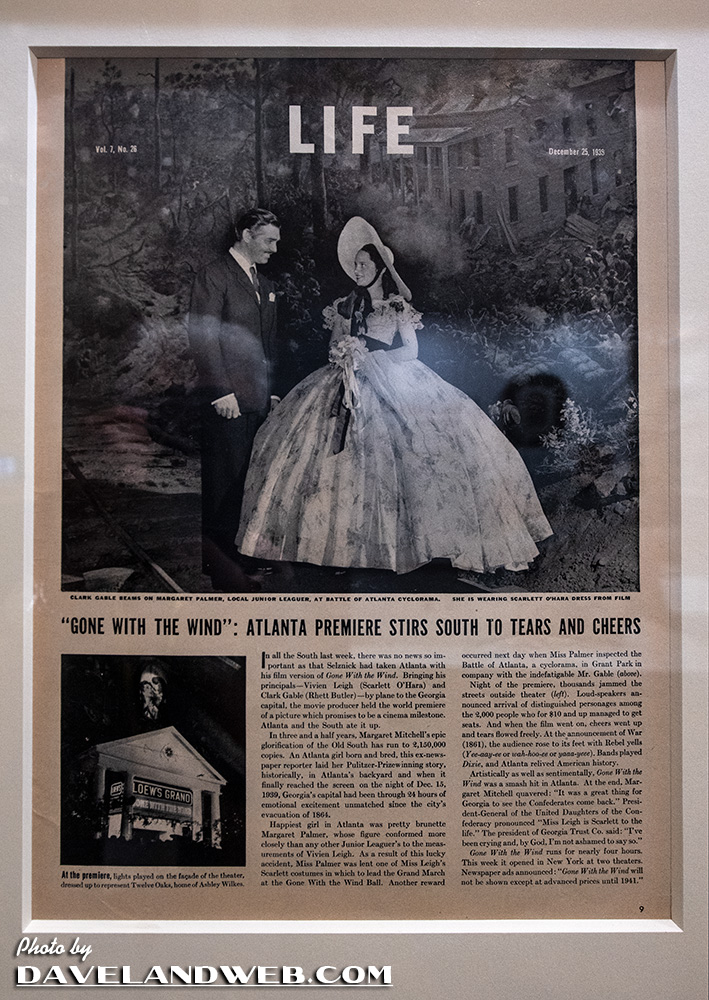
The section of the Cyclorama where Gable posed with Palmer:
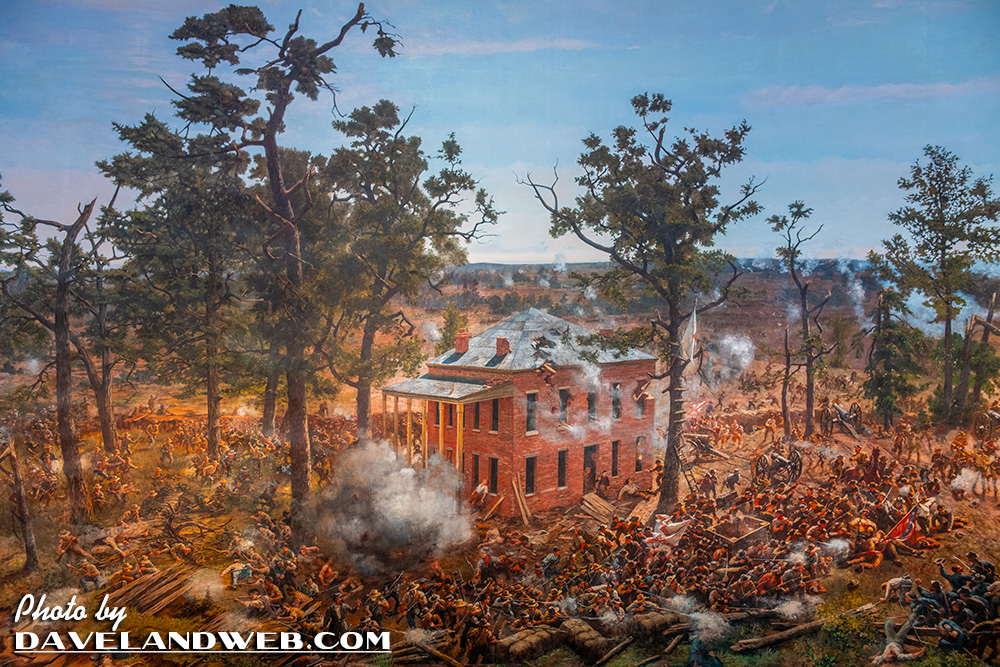
Gable commented that the only thing wrong with the exhibit was that he wasn’t in it. As a result, he was later added in as a dead northern soldier. What would Rhett have thought about that?
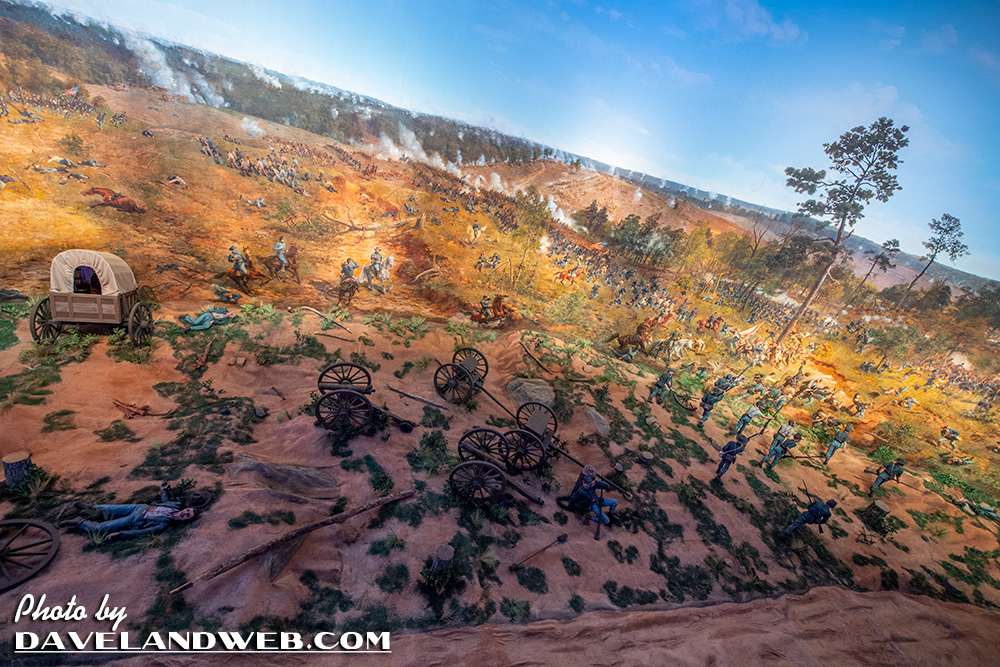
Dead Mr. Gable, I am writing this to you…
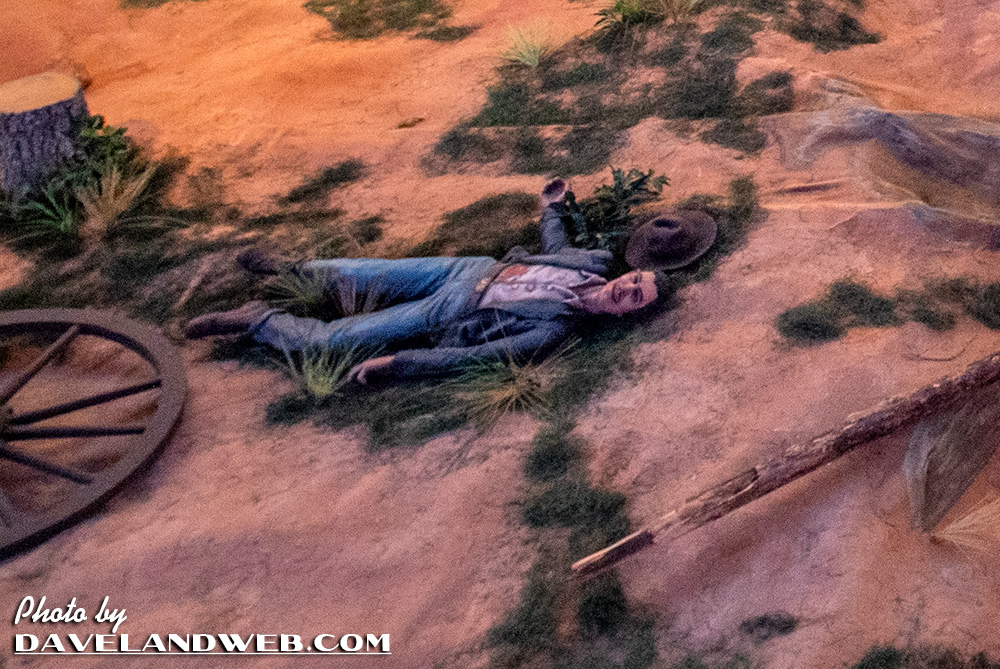
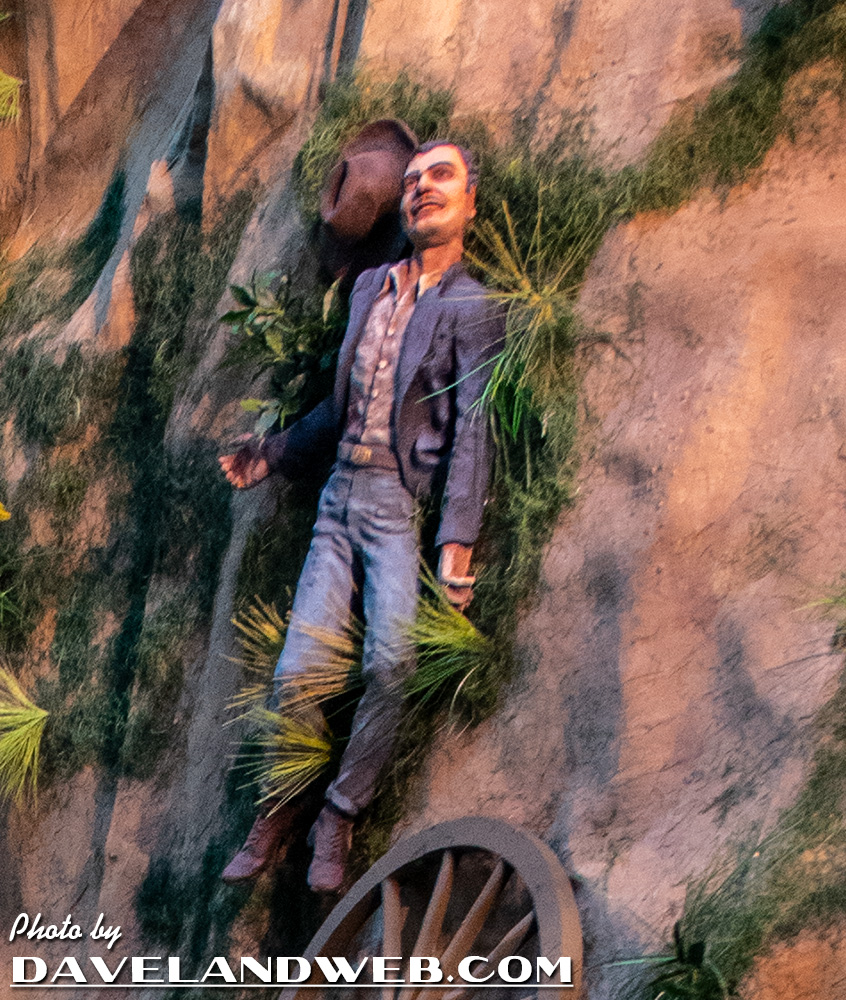
By 1983, the brochure text for the Cyclorama had been changed a bit:
…it was painted in 1885-6 by a group of German and Polish artists brought to America for this purpose by Mr. William Wehner, owner of the Milwaukee studio where it was set up and completed. First exhibited in Detroit in 1887, the painting traveled all over the United States before coming to its final resting place in the City whose destruction it commemorates.…In 1921 the painting was transferred from an old, wooden structure at a location in Grant Park to its present location in the imposing marble building on a hillside in the central part of the park. In 1936, by means of a WPA grant, the painting was made three-dimensional by the addition of blasted tree stumps, bushes and shrubbery that are shell-torn in effect, broken rails and cross-ties, life-like plaster figures of Confederate and Federal soldiers, and other fragments of war which form the battlefield surrounding the canvas.…The facility was re-opened in 1982 after 2 years of extensive conservation of the painting/diorama and renovation of the building, which now includes a revolving seating platform.
From 2015-2019, the painting was relocated and restored (again) to its present location at the Atlanta History Center in Buckhead where I was able to see it. Sections of the painting that had been chopped out in 1921 were put back in and the panoramic piece of art is now much closer to its original 1886 incarnation. Edited from the current Atlanta History Museum placard:
This painting tells us about a battle in the American Civil War. It also tells us about how people have thought about that war for more than 150 years. German artists painted the panorama 22 years after the battle. it was intended for Northern audiences interested in the U.S. Army victory at the Battle of Atlanta, July 22, 1864. Its creators made it for people who could and would pay to see it. The painting depicts a Union victory with Union heroes. It tells may stories. It does not tell others. Over more than a century, The Battle of Atlanta has been retouched, rebranded, and reinterpreted. People have seen in it stories of the victory of good over evil, a tribute to a reunited nation, and symbol of a mythical “Old South.” For a time, people saw in it the story of a Confederate battlefield victory. That is the opposite of what it was originally meant to be - and is.
Photos were not allowed in 2007; always the rebel, I managed to capture this one:
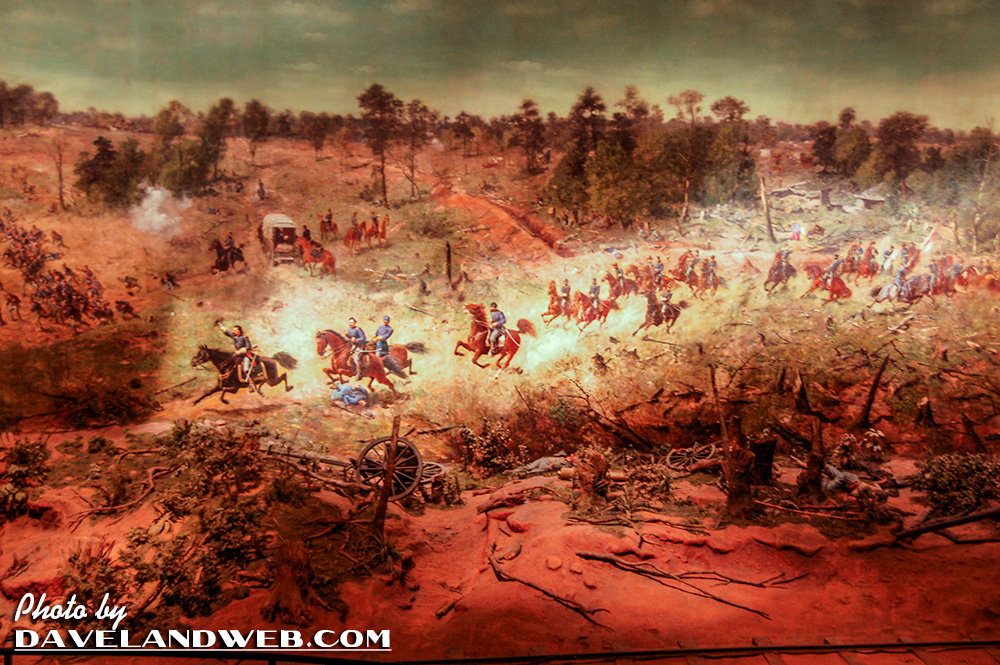
Sixteen years later, the policy was changed. This is approximately the same portion of the Battle of Atlanta Cyclorama painting that I shot before. MUCH better!

When I first saw this incredibly large “painting in the round,” I didn’t pay too much attention to what was depicted in the background painting or the figures/set pieces in the foreground. Being able to read the information in the outer foyer was extremely interesting and speaks volumes to how over the years “history” can become cloudy, reinterpreted, and used to further personal agendas, rather than be an accurate depiction of what truly happened.

Accurate or not, the Cyclorama is an impressive piece of art that attempts to tell a story.
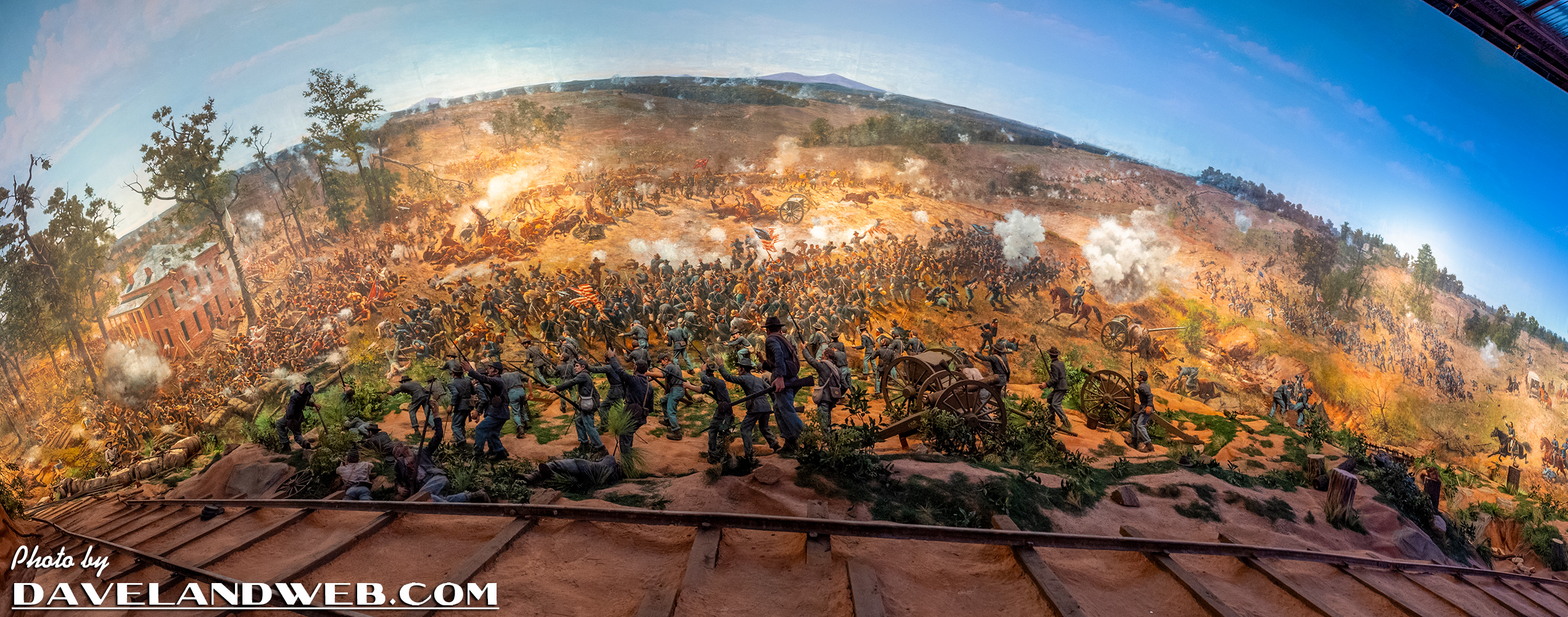

While some of the scenes depicted may seem disturbing, they are surely no match to the reality of that battle.
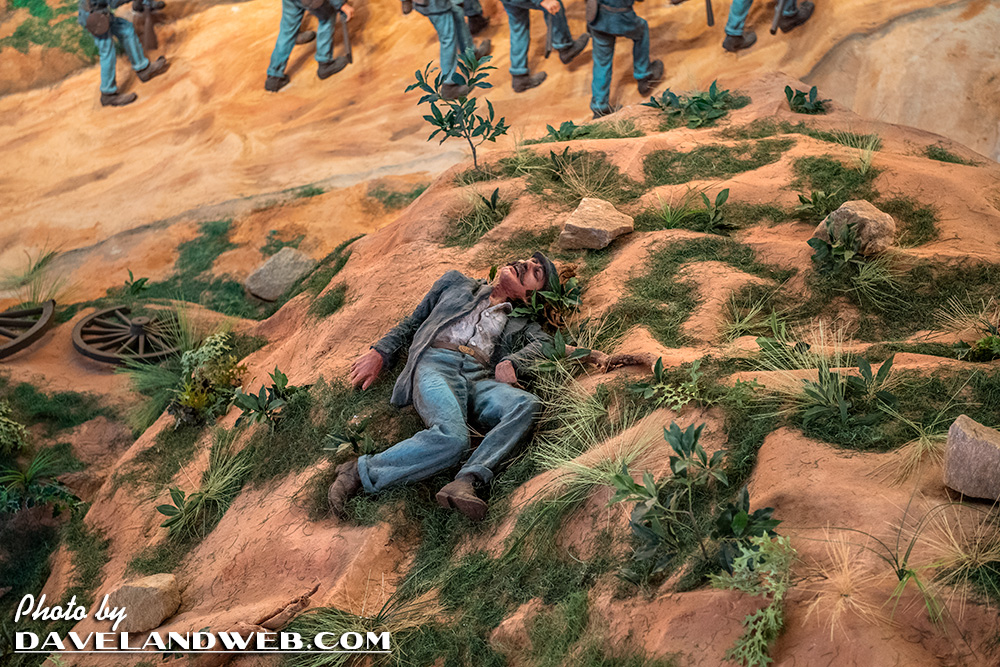
Here is Robert Schade’s oil on canvas figure study for the Cyclorama, painted prior to work beginning on the actual piece. It was painted on the same canvas as the larger painting, and probably was one of several such studies used to position groupings on the Cyclorama. It is the only known surviving study.
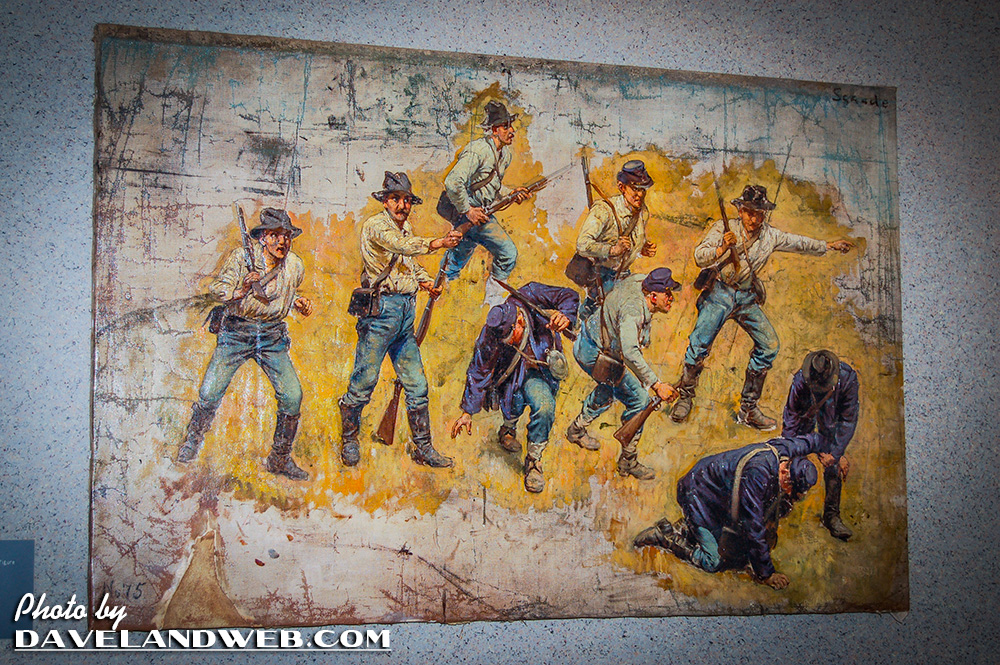
A few shots of the artisans behind the Cyclorama:

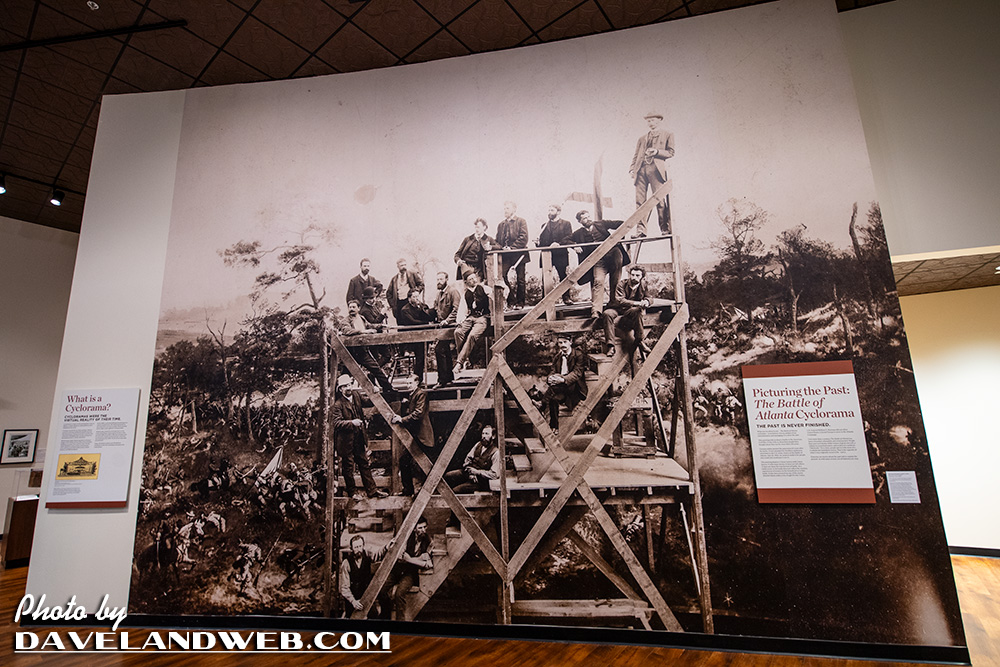
Want to see the backside of the Cyclorama?
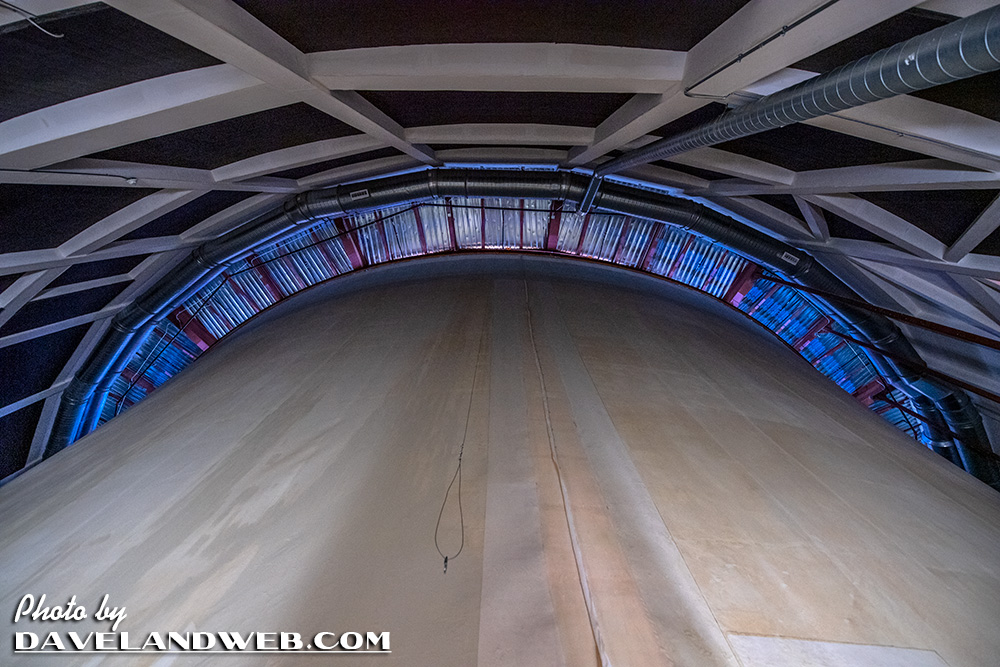
The one area for improvement for the Cyclorama would be the lighting. The painting is brightly lit, yet the figures in the foreground are extremely dark. Whether this was an intentional decision to throw focus on the painting instead of the plaster figures that were added years later is unknown. Regardless, it detracts from the ability to fully immerse the guest into the illusion of this faux reality.
See more Cyclorama/Atlanta History photos at my main website.

3 comments:
"Dead Mr. Gable, I am writing this to you…"
Now, there's a deep cut!
This is a really cool exhibit. I'll probably never get to see it in person,so I really appreciate these great pictures.
Yay Melissa - You got it!
Well, at least they lifted their "no pics" policy. It was an outdated policy ( at every attraction ) they day it came out. Those pics are great advertising to make others want to come and see it in person. The detail is impressive but it's a shame to hear about the lighting.
Post a Comment